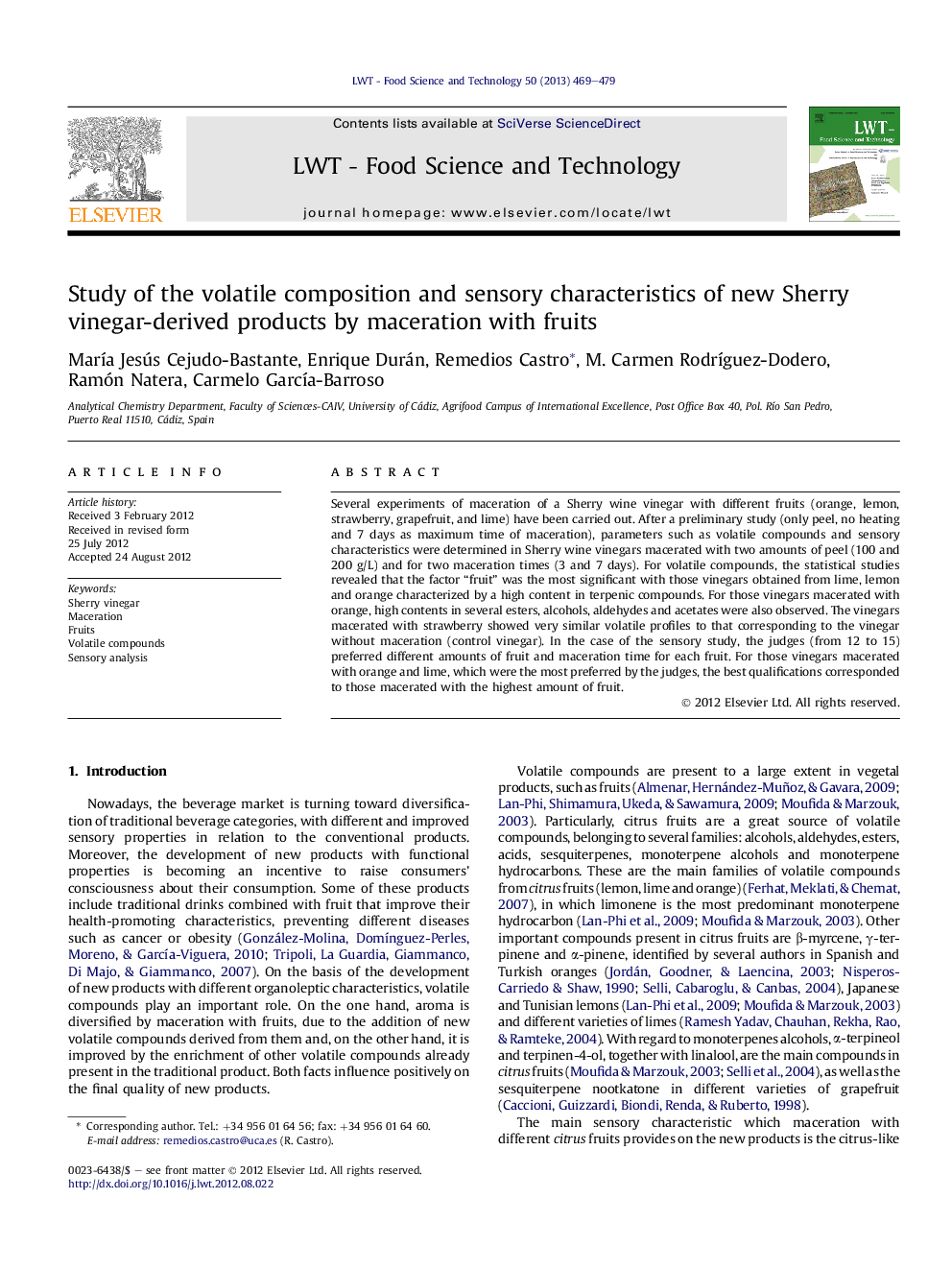| Article ID | Journal | Published Year | Pages | File Type |
|---|---|---|---|---|
| 6404862 | LWT - Food Science and Technology | 2013 | 11 Pages |
Several experiments of maceration of a Sherry wine vinegar with different fruits (orange, lemon, strawberry, grapefruit, and lime) have been carried out. After a preliminary study (only peel, no heating and 7 days as maximum time of maceration), parameters such as volatile compounds and sensory characteristics were determined in Sherry wine vinegars macerated with two amounts of peel (100 and 200Â g/L) and for two maceration times (3 and 7 days). For volatile compounds, the statistical studies revealed that the factor “fruit” was the most significant with those vinegars obtained from lime, lemon and orange characterized by a high content in terpenic compounds. For those vinegars macerated with orange, high contents in several esters, alcohols, aldehydes and acetates were also observed. The vinegars macerated with strawberry showed very similar volatile profiles to that corresponding to the vinegar without maceration (control vinegar). In the case of the sensory study, the judges (from 12 to 15) preferred different amounts of fruit and maceration time for each fruit. For those vinegars macerated with orange and lime, which were the most preferred by the judges, the best qualifications corresponded to those macerated with the highest amount of fruit.
⺠New Sherry vinegar-derived products by maceration with fruits. ⺠Orange, lemon, strawberry, grapefruit, and lime were employed. ⺠Two amounts of peel (100 and 200 g/L) and two maceration times (3 and 7 days). ⺠Vinegars with strawberry show similar volatile profiles to control vinegar. ⺠Vinegars with orange and lime were the most preferred by the judges.
